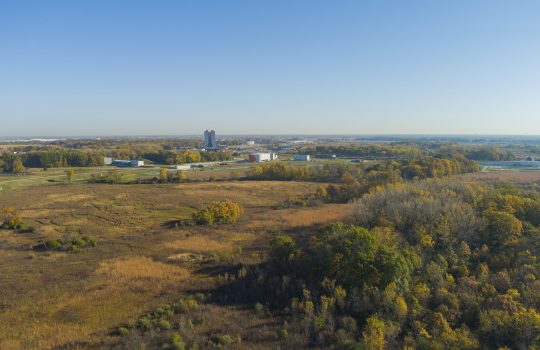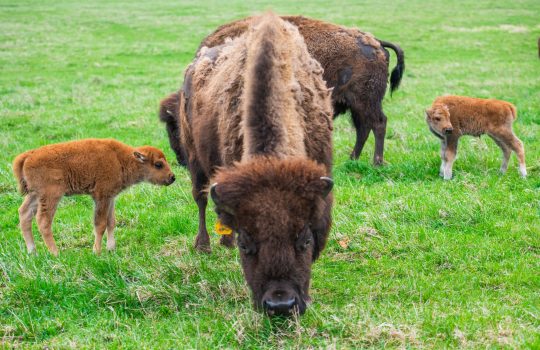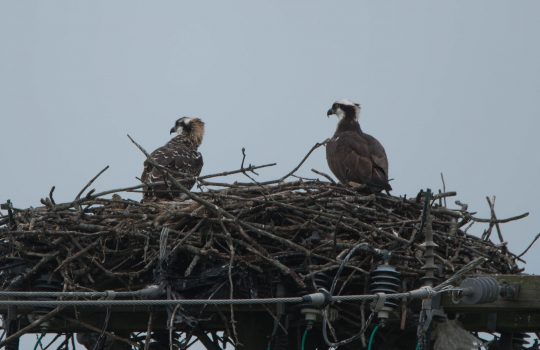By R.E. Natowicz
Cutting-edge particle physics research is always in season at Fermi National Accelerator Laboratory, but spring is a most special time of the year as Fermilab’s baby bison are born. Today, two bison calves were born, marking the start of calving season at Fermilab.
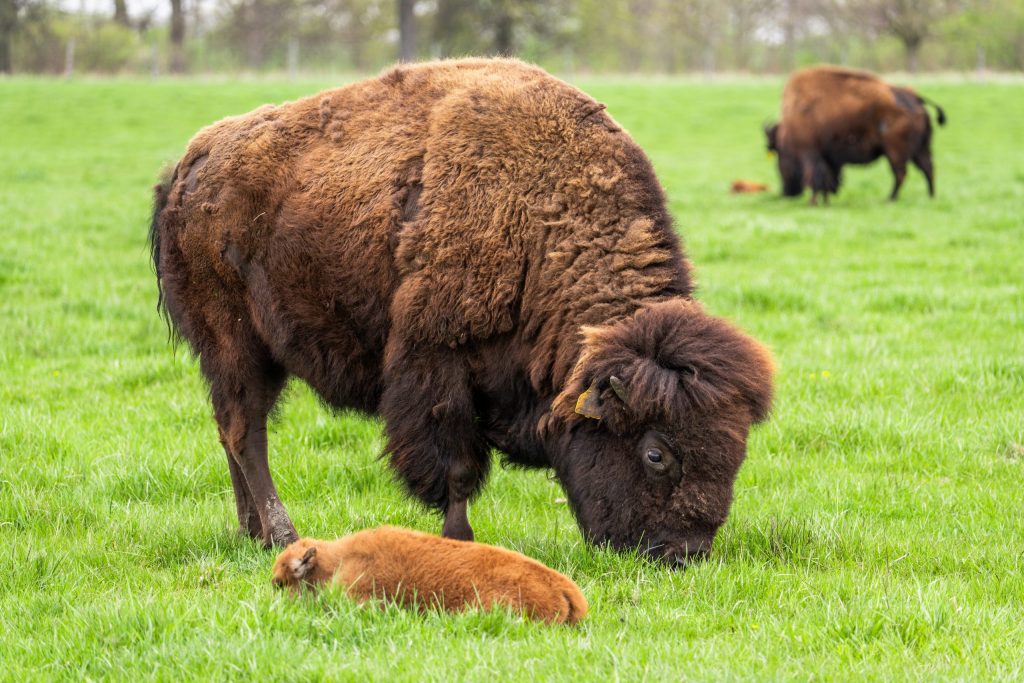
Bison season has started at Fermilab with the birth of not one, but two bison calves arriving today! You can visit the bison as Fermilab is open from dawn to dusk every day of the week. Photo: Dan Svoboda Fermilab
Cleo Garcia, a member of the Grounds Maintenance team who has the important job of caring for the bison herd, said that during this season Fermilab is expecting the births of about 20 calves.
Garcia gives extra attention to the female bison, called cows, to estimate the number of new births to expect each year. He watches for physical changes and considers the age of the cows to make this determination.
The Fermilab herd currently consists of 24 cows and two bulls. “Some of them are getting older and might not calve this year,” Garcia said. Last year the cows gave birth to 20 calves, and in the year prior there were 21 births.
In addition to contributing to the conservation of American bison, Fermilab’s herd is a huge draw for visitors. “They’re big animals, and visitors bring their kids who enjoy watching them,” Garcia said.
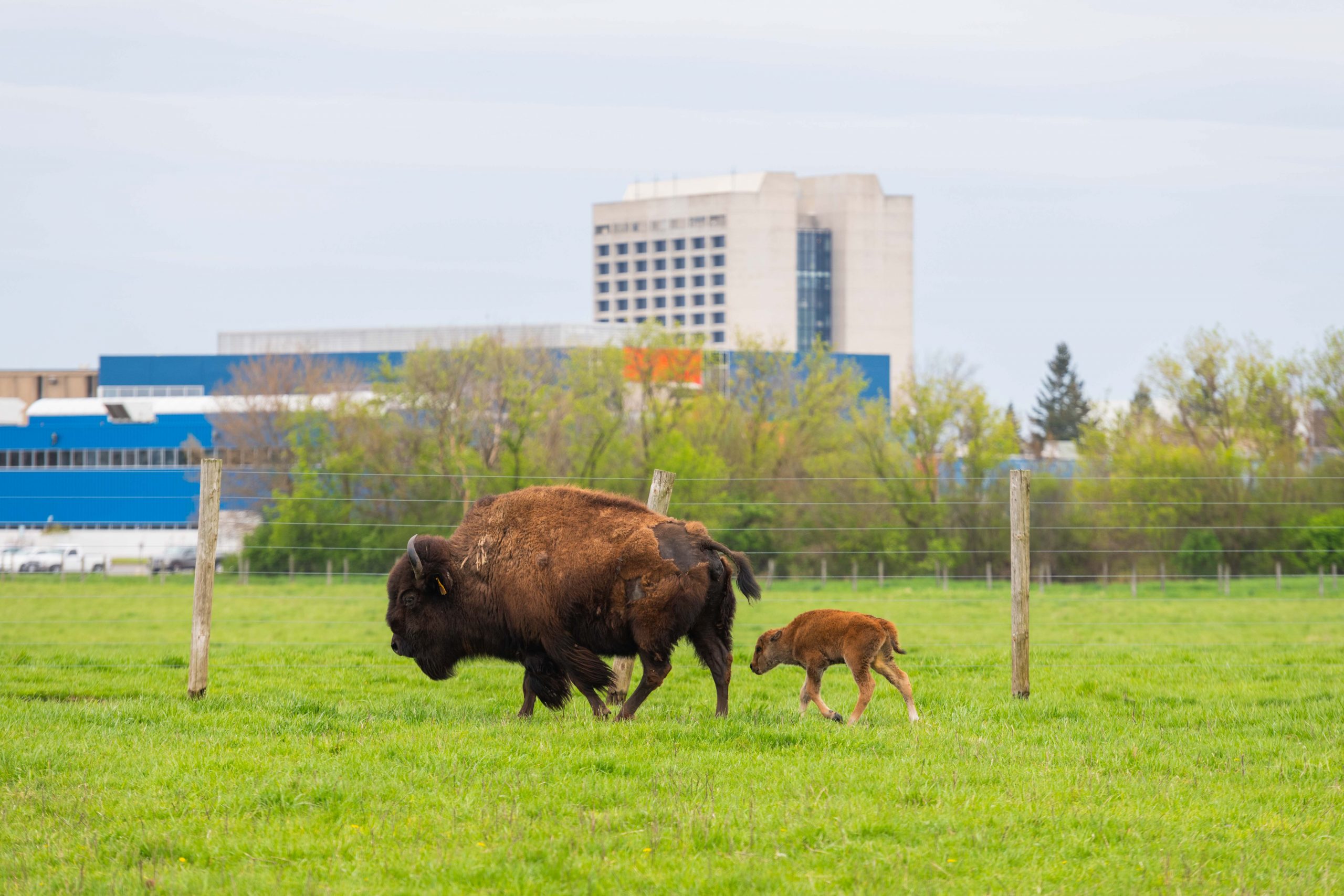
Photo Ryan Postel, Fermilab
Garcia notes that the bison have their own personalities — some being more docile, some wilder. They play and engage with each other in different ways. Sometimes the bulls will charge at each other. Most importantly, the bison are very protective of their small calves.
The lab’s first director, Robert R. Wilson, pioneered the idea of making bison a Fermilab tradition. He wanted to show that Fermilab was on the frontier of particle physics research, and bison represented the frontier era. “When you’re outside with them, you’d think you’re out in the prairie,” Garcia said.
Bison are sizable animals: the bulls can weigh over one ton, and cows average between 900 and a little over 1000 pounds. When calves are born, they weigh between 40-70 pounds. The calves grow quickly — just six months later they usually have grown to between 300 and 350 pounds. When bison babies are first born, they are cinnamon colored, and two months later their fur deepens to a darker shade of brown.
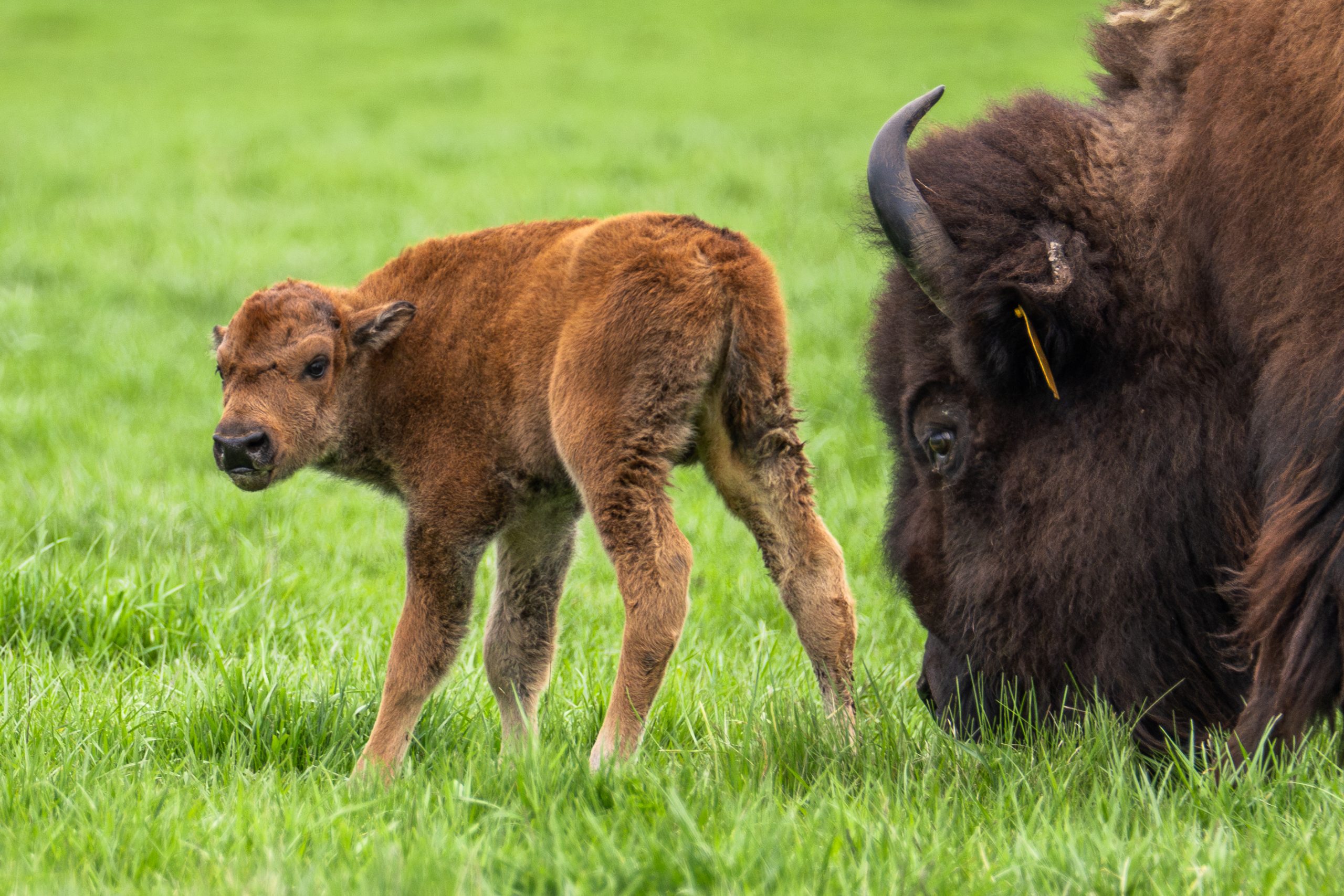
Photo: Dan Svoboda Fermilab
Fermilab refreshes the bulls in the herd every five to seven years. The Fermilab bulls have been genetically tested to ensure that they are pure-bred American bison. This is key to maintaining the health of the herd. In 2015, Fermilab tested the entire herd and determined that there were no domesticated cattle genes present.
Calving season usually starts in the middle of April and continues until June. Although there are signs of an early spring in Illinois this year, Garcia noted that so far he hasn’t seen indications that warmer weather is affecting the herd, but added, “We’ll see how the season goes.”
Bison are hardy animals that can live outside year-round in most any weather. Even so, their Fermilab keepers provide them with structures within the corrals to block the wind that can whip across Fermilab’s flat prairie land.
As part of his duties, Garcia feeds the bison and checks on their well-being daily — especially during calving season. He visits all the cows to watch for signs that they may soon give birth. Garcia also monitors the young calves to make sure that they are healthy. During the winter he supplements the herd’s food with hay and grain. Visitors in the summer will see the bison grazing upon plentiful grasses naturally growing on Fermilab’s grounds. They only need to be given ample water during these months.
Garcia said he likes being outdoors with the animals. “Calving season is the most rewarding time of the year,” he said. “You see new life coming to the land.”
You can view the bison herd anytime from the bison camera or visit Fermilab seven days a week during outdoor visiting hours from dawn to dusk.
The Fermilab site has been designated a National Environmental Research Park by the U.S. Department of Energy. The lab’s environmental stewardship efforts are supported by the Department of Energy Office of Science as well as Fermilab Natural Areas.
Fermilab is supported by the Office of Science of the U.S. Department of Energy. The Office of Science is the single largest supporter of basic research in the physical sciences in the United States and is working to address some of the most pressing challenges of our time. For more information, visit Fermilab’s website and follow us on Twitter at @Fermilab.

